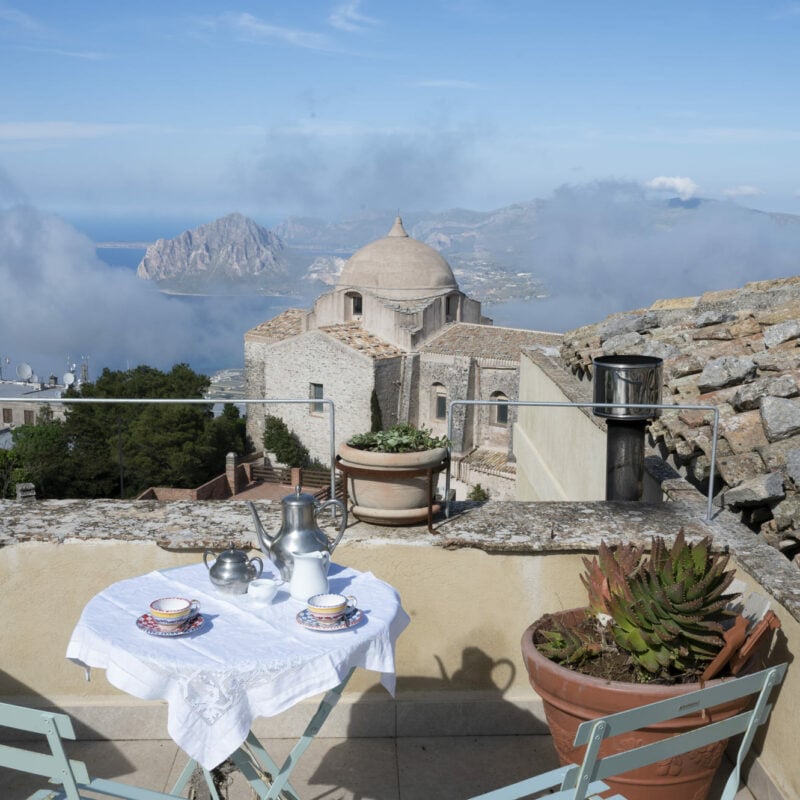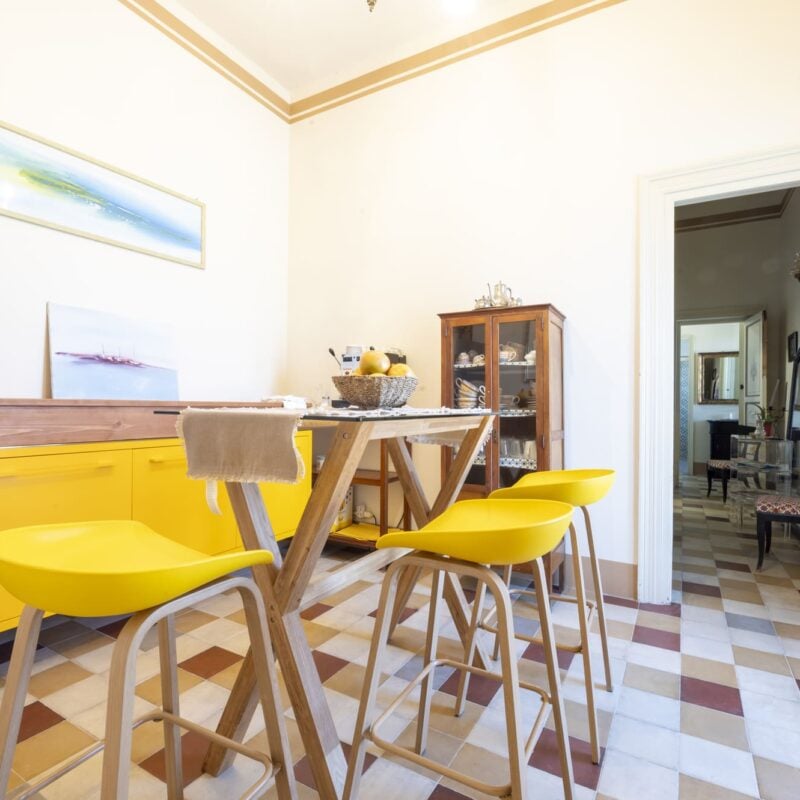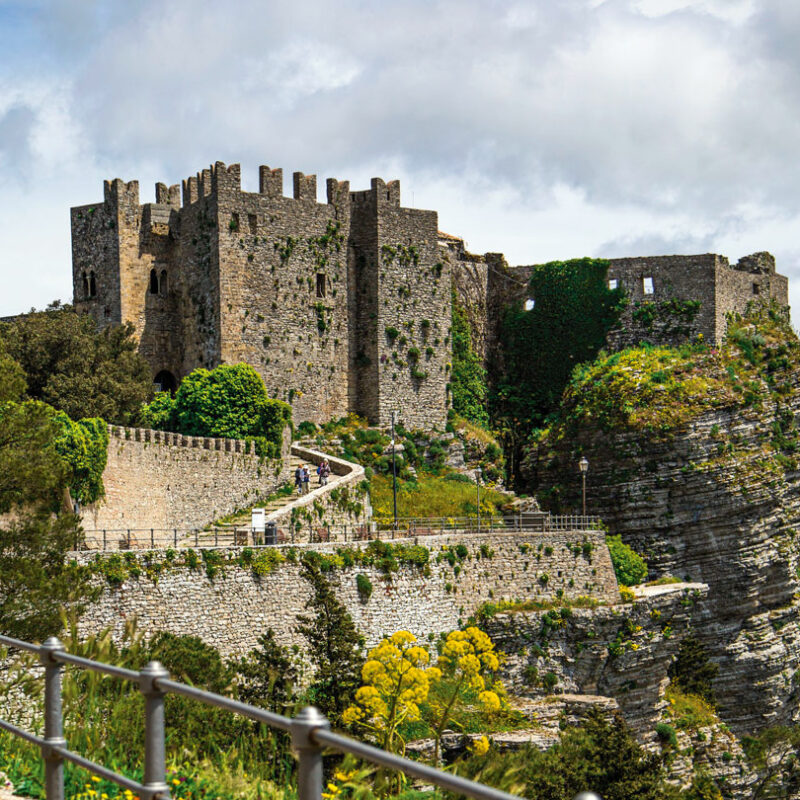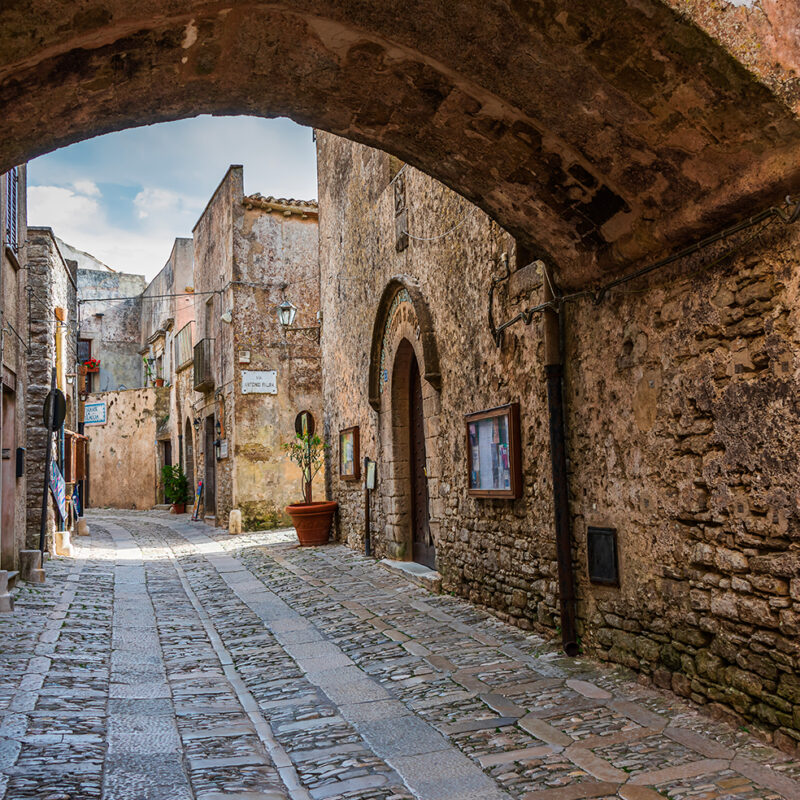Sales
Da 110€ a 160€
La vista dalla nostra terrazza vi metterà in pace con l’universo. Il cielo turchino delle giornate di sole lascia intravedere l’isola di Ustica oltre il golfo di monte Cofano. Talvolta nelle giornate più fredde, soffici spire di nuvole avvolgono l’intera città nell’abbraccio di Venere proiettandoci in dimensioni fiabesche.
Il B&B Casa Cattauro è stato ricavato dalle antiche camere da letto di in un edificio di fine ‘800, che si ergeva sulla parte alta della cinta muraria a nord della città di Erice.
La struttura originaria era costituta da tre case che si affacciavano sullo stesso cortile. Negli anni ’30 queste divennero un’unica spaziosa abitazione ed il cortile diventò un terrazzo.
Le camere del B&B occupano il primo piano già allora destinato alla zona notte; inoltre la “casa pile”, cioè quella parte delle vecchie abitazioni destinate alla lavanderia dove si trovavano le tinozze di pietra, è stata trasformata in uno sfizioso appartamento.


Sul cocuzzolo di Monte San Giuliano, come fu chiamato in epoca normanna, sta nascosta l’antica città di Erice.
Da valle, infatti, non se ne immagina null’altro che i resti dell’antico tempio dedicato ad Astarte dagli Elimi, una popolazione mediorientale che fondò e costruì Erice insieme a Segesta e a Entella circa 3000 anni fa.
Della fondazione Elima rimane, oltre il tempio, rimaneggiato in epoca normanna e trasformato in fortezza, anche la base delle mura di cinta della città. Queste furono poi fortificate ed innalzate ulteriormente dai fenici e dai romani.


Sono due i modi in cui, qui su, la nebbia si manifesta. C’è una nebbia mobile e rarefatta ed un’altra statica e densa.
La prima, paradossalmente, è la più inquietante: ti viene incontro o t’insegue. Appena apri la porta entra in casa, a soffi e fiocchi sfilacciati; ti sfiora, ti si avvolge intorno in spire, sembra avere qualcosa da dirti e non vuole che tu ti distragga, cattura la tua attenzione e forse vuole anche entrarti nell’anima o spingerti in una precisa direzione.
L’altra nebbia, quella densa, riempie i corridoi di pietra e s’insinua in ogni fessura tra sassi e muschi, gira come girano i vicoli e colma d’ovatta ogni spazio vuoto.
Vivi l’esperienza di soggiornare a Casa Cattauro, per evadere dall’ordinario e immergerti in una nebbia fiabesca.

